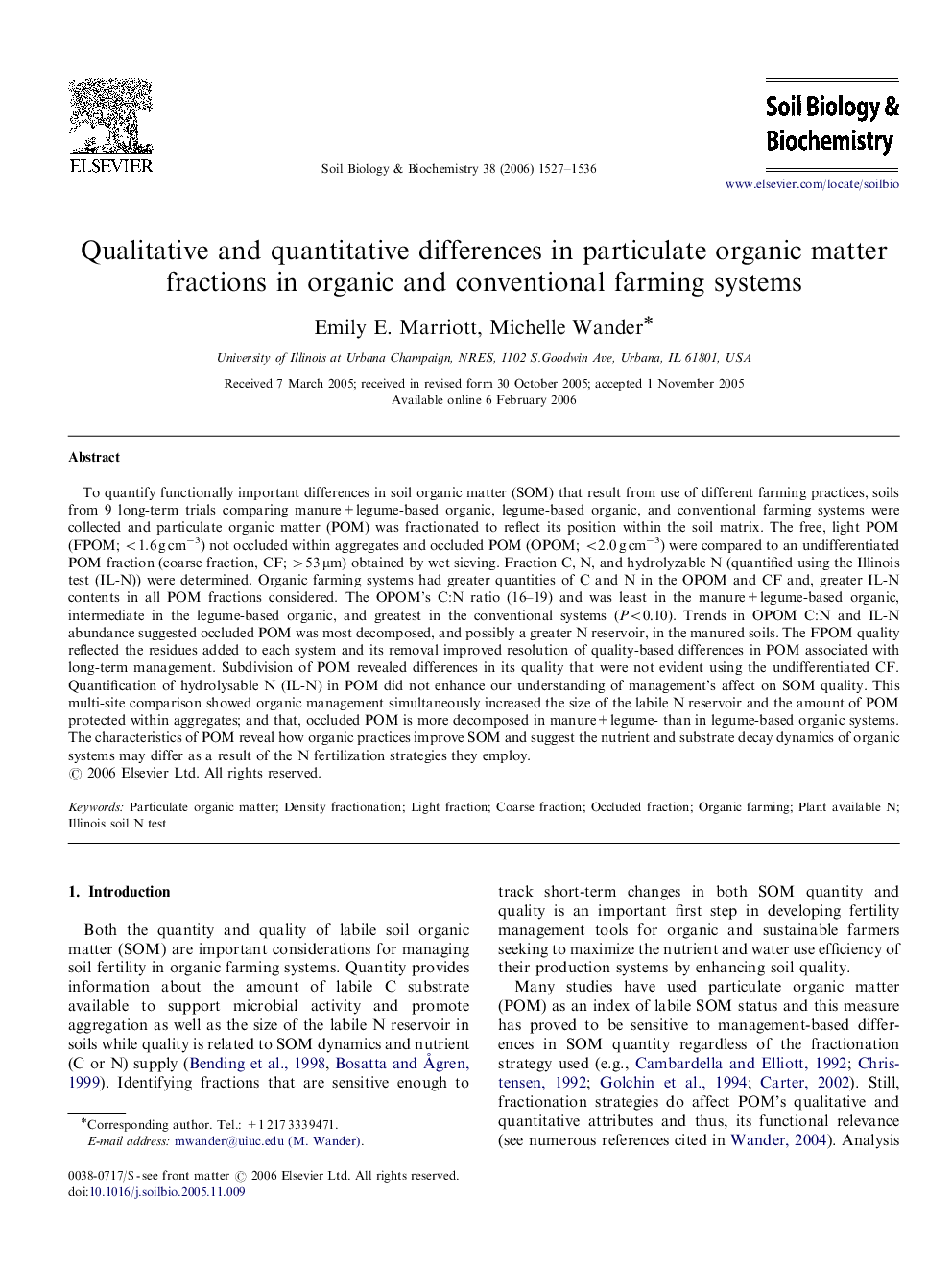| Article ID | Journal | Published Year | Pages | File Type |
|---|---|---|---|---|
| 2026556 | Soil Biology and Biochemistry | 2006 | 10 Pages |
To quantify functionally important differences in soil organic matter (SOM) that result from use of different farming practices, soils from 9 long-term trials comparing manure+legume-based organic, legume-based organic, and conventional farming systems were collected and particulate organic matter (POM) was fractionated to reflect its position within the soil matrix. The free, light POM (FPOM; <1.6 g cm−3) not occluded within aggregates and occluded POM (OPOM; <2.0 g cm−3) were compared to an undifferentiated POM fraction (coarse fraction, CF; >53 μm) obtained by wet sieving. Fraction C, N, and hydrolyzable N (quantified using the Illinois test (IL-N)) were determined. Organic farming systems had greater quantities of C and N in the OPOM and CF and, greater IL-N contents in all POM fractions considered. The OPOM's C:N ratio (16–19) and was least in the manure+legume-based organic, intermediate in the legume-based organic, and greatest in the conventional systems (P<0.10P<0.10). Trends in OPOM C:N and IL-N abundance suggested occluded POM was most decomposed, and possibly a greater N reservoir, in the manured soils. The FPOM quality reflected the residues added to each system and its removal improved resolution of quality-based differences in POM associated with long-term management. Subdivision of POM revealed differences in its quality that were not evident using the undifferentiated CF. Quantification of hydrolysable N (IL-N) in POM did not enhance our understanding of management's affect on SOM quality. This multi-site comparison showed organic management simultaneously increased the size of the labile N reservoir and the amount of POM protected within aggregates; and that, occluded POM is more decomposed in manure+legume- than in legume-based organic systems. The characteristics of POM reveal how organic practices improve SOM and suggest the nutrient and substrate decay dynamics of organic systems may differ as a result of the N fertilization strategies they employ.
